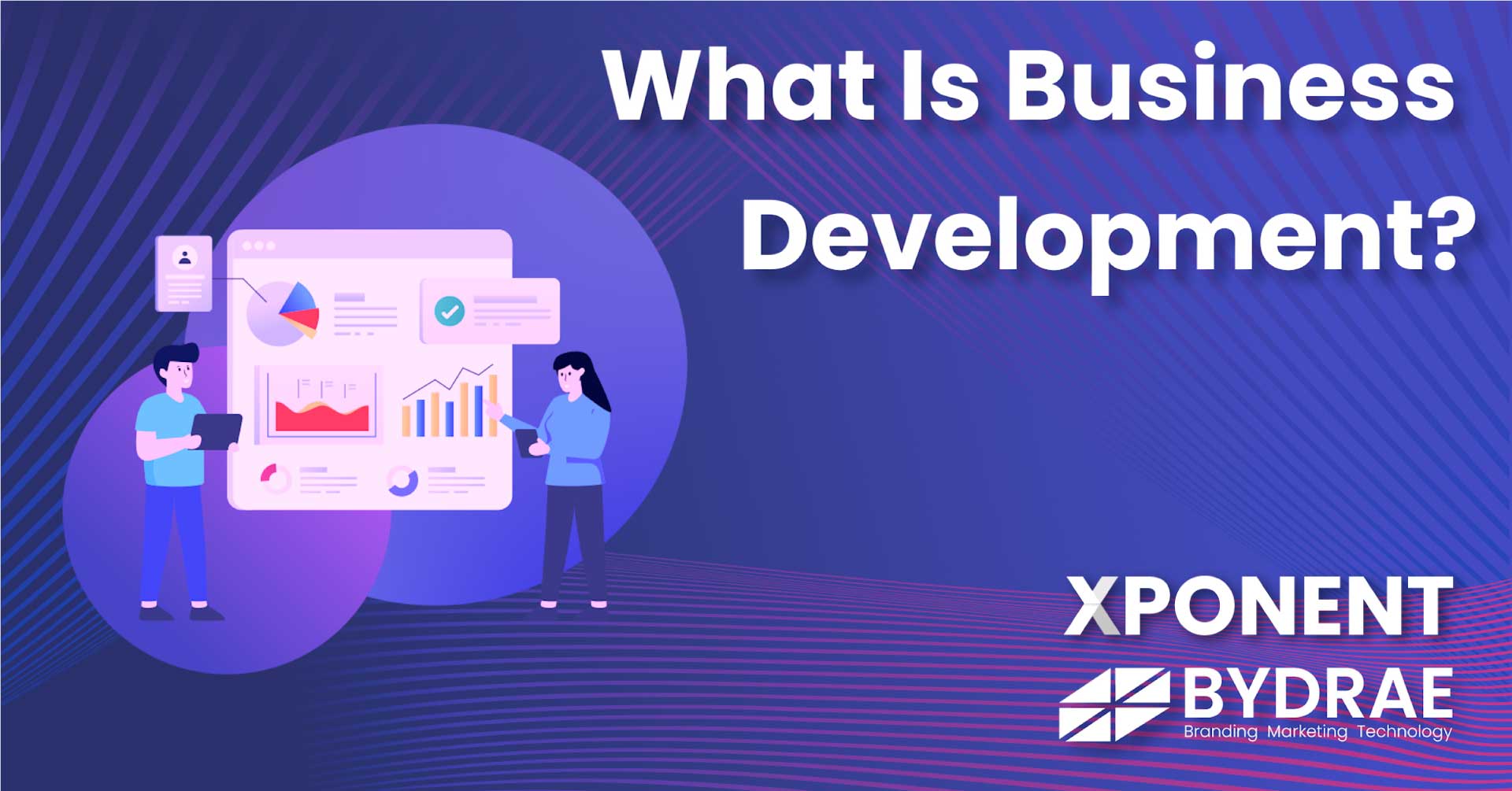This article aims to improve our reader’s understanding of business development by breaking down some concepts to understand how business development works. To clarify, this article is primarily aimed at “B2B” audiences, although the concepts might be helpful to other businesses.
What is business development?
Business development is the pursuit of improving a business’s profitability and value, usually by analysing data from previous transactions, macroeconomics and market research to achieve specific outcomes that lead to increased profitability or share value.
How is business development different from sales?
Sales is the act of generating revenue from selling a product or service to a customer. Sales can be thought of from two points of view that are useful to categorise the different aspects of generating revenue.
Internal sales
Internal sales could also be considered “inbound” requests from the market to provide a customer with a product. The customer typically already knows the products you sell and is familiar with your process. Internal sales involve a few steps, which generally include a request for quotation, quote, invoice, delivery note and ultimately a receipt of payment.
External sales
External sales, sometimes called “sales representation” or “key account management”, is generally more “outbound”. External sales teams generally concern themselves with onboarding new clients or preventing clients from switching to different providers by resolving disputes or improving customer experience. They manage the relationship businesses have with their customers on a person-to-person basis.
Business Development
On the other hand, business development is more concerned with how businesses deliver value to customers. Business development attempts to increase the profits of the business and the value of the company’s shares.
Isn’t profit and value the same thing?
Profits are derived from generating revenue that exceeds your costs, expenses and taxes, resulting in a profit. The resulting profits can be retained or paid to shareholders as a dividend.
Value is the perception of what a business is worth. The difference is nuanced but essential. How do we increase profits?
Generate Sales
A company can increase its profitability by generating more revenue. While this action will not increase the percentage of revenue earned, it will increase the number of profits generated.
Reduce Direct Costs and Expenses
Costs can be seen as the price a business pays to manufacture or purchase a product intended for resale. More vaguely, a direct cost can typically be attributed to a specific sale. Examples of costs include stock purchases or sales commissions.
Expenses are fixed costs that must be paid, whether the business makes a sale or not. Examples of expenses are things like rent and business license fees.
Business development officers decrease the cost of making a sale or increase the value of a sale relative to its costs resulting in larger profit margins or a competitive price advantage. Business development officers achieve this by renegotiating supply agreements or finding alternatives. They explore markets to find complementary products or save by buying in bulk. Sometimes they investigate ways of preventing theft or stock loss due to poor storage or spoilage. These folks are often called “shrinkage officers” or “loss prevention officers”.
Taxes
Tax consultants endeavour to avoid paying certain taxes by structuring their organisation in a way that incurs fewer taxes or takes advantage of government programs and tax rebates to increase the funds available after taxes have been calculated. Whilst tax consultants are a breed of their own. I consider tax consultants as business development consultants since they have similar goals to typical business consultants while being limited to the apparatus of administration and corporate governance.
So what is value?
Value can be defined as the perception a market or group of shareholders have of what a share of a company is worth. This goes for publicly traded or private companies. Value can be thought of in two distinct areas, i.e. real value and perceived value.
Real Value
Real value is determined by calculating a business’s net asset value or by estimating its profitability based on past performance and macroeconomic factors to a certain degree of confidence. Real value attempts to determine a number without considering qualitative factors such as strategic value, brand loyalty or goodwill.
Perceived Value
Perceived value is difficult to define because one has to resort to vagaries to account for all the caveats. In short, perceived value is what people believe a company is worth or possibly what people are willing to pay to own a share of a company. In some ways, perceived value is more accurate than real value because it leads to the “willing buyer, willing seller” relationship.
*Side Note: Another way to think about this. All value is perceived, but not all perceived value is real.
How can you improve a business’s value?
Marketing
Marketing increases the size or share of a specific marketplace to which a company can lay claim. Marketing also captures or develops new markets for the products a business could supply. In some cases, marketing can even help a company create new products for markets previously never served.
Branding
Branding positions a business in the mind of a specific audience and results in loyalty from that customer base. Business development is not directly related to branding, but most business development officers prefer to work with high-quality brands.
Automation and Systems Development
By automating branding and marketing activities, one builds a sales engine to help the business secure growth. Guaranteed growth is a surefire way to increase a business’s value.
Risk Mitigation
Businesses constantly face risks, and those risks are shared by the people who invest in that business. Investors become more comfortable allocating capital to companies that actively work to mitigate risk or avoid adverse outcomes. This mitigation will also lead to a higher valuation of a specific business.
Monopolies
Once a company achieves a specific type of monopoly, investors would be far more likely to allocate capital towards those concerns. Monopolies probably deserve a whole post of their own. For the scope of this article, I will just provide some examples to help make my point. Exclusive rights to own a franchise in a town is a type of monopoly. Patents and trademarks are also examples of legal monopolies.
Let’s Summarise
Business development seeks to improve the profitability of a business while also increasing the value of that business. Business development is typically tactical and strategic, while sales are more operational. Business developers seek to increase revenue while decreasing costs, expenses and taxes without harming the business’s longevity. They seek greater valuations by influencing branding, marketing and sales activities. It mitigates risks and aims to ease the burden of management through automation and systems development, making the business more attractive to investors. It yearns for legal monopolies that make its value evident and inevitable.
Thanks for reading.
Beyers
Reach out to us for business development consulting.





